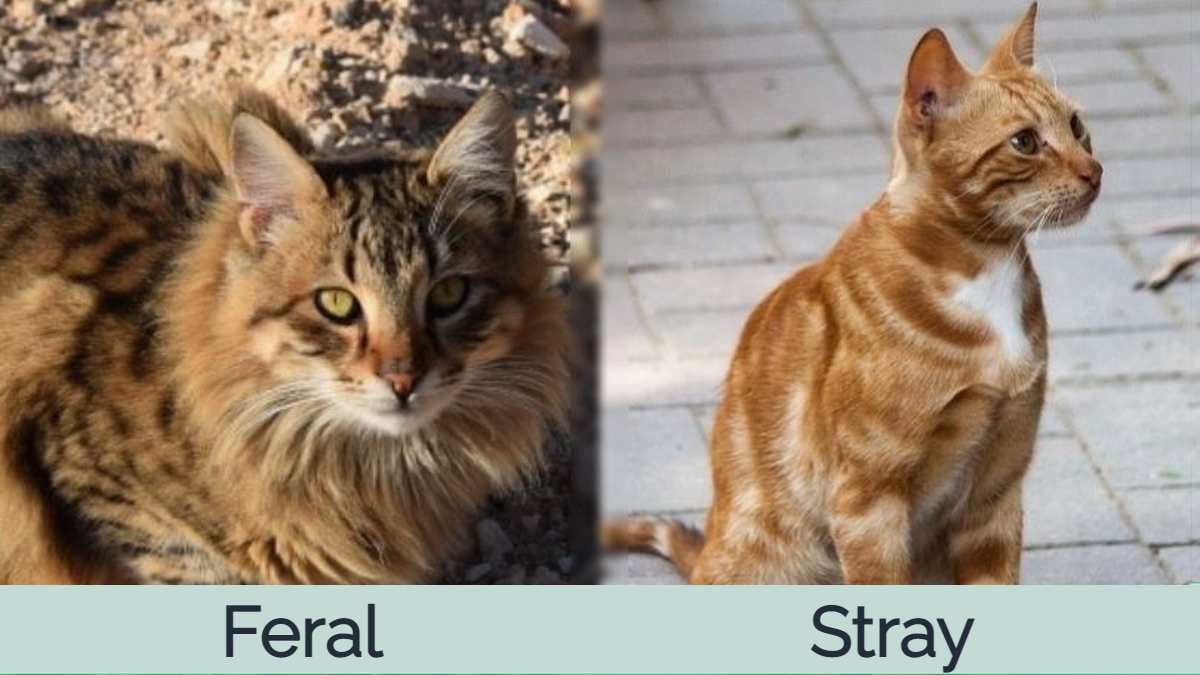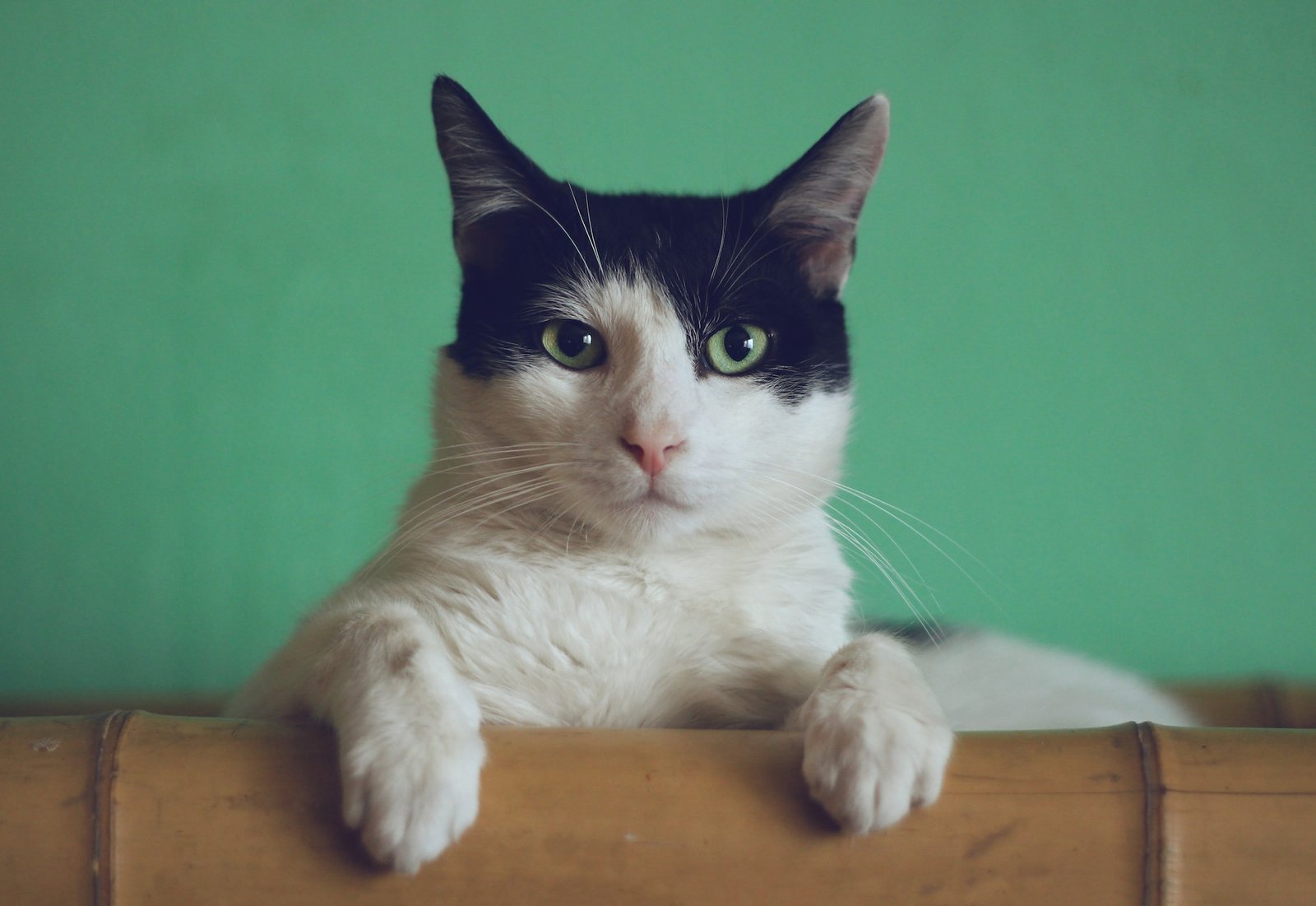The main difference between a stray cat and a feral cat lies in their level of socialization and dependence on humans.
- Stray Cat: A stray cat is one that was previously someone’s pet but has become lost or abandoned. Stray cats are generally more socialized with humans and may approach people for food or attention. They may be comfortable living near human habitats and may even allow themselves to be handled or petted.
- Feral Cat: A feral cat. On the other hand, is a cat that has had little to no human interaction and has reverted to a wild state. These cats are typically born and raised in the wild or have been abandoned at a very young age, preventing them from socializing with humans. Feral cats are generally fearful of humans and will avoid contact whenever possible.
In summary, both stray and feral cats may roam outdoors without a permanent home. Stray cats have had previous human contact and are more likely to be approachable, while feral cats are wild and wary of humans.
How do I inform the distinction even as the cats are outdoors?
Distinguishing between stray and feral cats while they are outdoors can be challenging but not impossible. Here are some signs that can help you differentiate between the two:
- Behavior around humans:
Stray cats may approach you or other humans, seeking food or attention.
Feral cats will typically avoid humans and may exhibit fearful or defensive behavior if approached.
- Physical appearance:
Stray cats may appear relatively groomed and well-fed, especially if they’ve recently been someone’s pet.
Feral cats might appear less groomed, with a rougher coat and a more lean or scrawny appearance. Due to their reliance on hunting for food.
- Ear tipping:
- In some communities, feral cats that have been trapped, neutered, and released (TNR) may have a small portion of one ear removed (ear tipping) as a sign that they’ve been sterilized. This can be a visual indicator of a feral cat.
- Socialization level:
Stray cats may exhibit more curiosity towards humans and might be more comfortable being approached.
Feral cats are typically very wary of humans and will avoid direct interaction.
How do I tell feral and stray cats apart once I have trapped them?
Once you’ve trapped a cat, whether it’s stray or feral, there are several indicators you can look for to determine its socialization level:
- Behavior in the trap:
Feral cats will often exhibit more fearful and defensive behavior when trapped. They may hiss, growl, or try to escape aggressively.
Stray cats may be more vocal but less aggressive overall. They might show signs of distress, but they may also calm down more quickly once trapped.
- Response to human presence:
Feral cats will typically remain fearful and avoidant of humans even when confined in a trap. They may cower in the back of the trap or try to hide.
Stray cats may show signs of recognition or familiarity with humans, such as approaching the front of the trap when a person approaches or making eye contact.
- Physical examination:
If you’re able to safely examine the cat, check for signs of previous human interaction, such as a collar mark or a clipped ear indicating that it has been spayed or neutered.
Note the cat’s overall condition, including its grooming, body weight, and any visible injuries, which may provide clues about its previous living conditions.
- Vocalization:
Pay attention to the cat’s vocalizations while trapped. Feral cats may continue to vocalize in fear or distress, whereas stray cats might vocalize to seek attention or express discomfort.
The Inner Life of Cats
- “The Inner Life of Cats: The Science and Secrets of Our Mysterious Feline Companions” is a book written by Thomas McNamee. Published in 2017, the book delves into the complex and enigmatic nature of domestic cats, exploring various aspects of their behavior, biology, and relationships with humans.
- In “The Inner Life of Cats,” McNamee draws on scientific research, anecdotal evidence, and personal observations to provide insights into topics such as:
- Feline behavior: The book explores the behaviors and instincts that drive cats, including hunting, territoriality, and social interactions with other cats and humans.
- Communication: McNamee delves into how cats communicate with each other and with humans, including vocalizations, body language, and scent marking.
- Cognitive abilities: The book discusses cats’ intelligence, problem-solving skills, and memory, debunking common myths about feline cognition.
- The human-cat bond: McNamee explores the history of the domestication of cats and examines the unique bond that exists between cats and humans, discussing the benefits of having cats as companions.
Why do cats purr?
Cats purr for various reasons, and while it’s a sound most commonly associated with contentment and relaxation, it can also signify other emotions and physiological states. Here are some reasons why cats purr:
- Contentment and Relaxation: The most well-known reason for purring is when a cat is feeling content and relaxed. This often occurs when they’re being petted, snuggled, or are in a comfortable environment.
- Communication: Cats may purr as a form of communication. Mother cats purr to their kittens to provide comfort and reassurance, and kittens often purr back to their mothers as a sign of contentment.
- Healing and Self-Soothing: Purring has been suggested to have healing properties. It’s believed that the vibrations produced by purring may help cats heal from injuries, reduce pain, and promote bone strength. Cats may also purr when they’re injured or in pain as a self-soothing mechanism.
- Stress and Anxiety: Interestingly, cats may also purr when they’re stressed, anxious, or in pain. Some researchers believe that purring in these situations may serve as a self-calming behavior, helping cats cope with unpleasant or stressful situations.
When compared to wildcats, why do house cats vocalize so much more?
House cats, also known as domestic cats, have developed a wider range of vocalizations compared to their wild counterparts, primarily due to their interactions with humans and their evolution in domestic environments. Here are several factors that contribute to this phenomenon:
- Communication with Humans: Domestic cats have adapted to living alongside humans, who often respond to and interact with their vocalizations. Cats have learned to communicate their needs, desires, and emotions to humans through a variety of vocal cues, which has led to the development of a diverse repertoire of sounds.
- Selective Breeding: Over centuries of domestication, humans have selectively bred cats for various traits, including vocalization patterns. Some breeds of domestic cats are known for being particularly vocal, such as Siamese cats, which have a reputation for their loud and frequent vocalizations.
- Dependency on Humans: Unlike wildcats, which rely primarily on non-vocal communication methods such as body language and scent marking, domestic cats have become more dependent on humans for food, shelter, and social interaction. Vocalizing can be an effective way for cats to communicate their needs to their human caregivers.
- Social Complexity: Domestic cats often live in multi-cat households or near other animals and humans. In these environments, vocalizations can play a crucial role in social interactions, territorial disputes, and establishing hierarchies within the household.
How can you get a cat to love you?
Building a strong bond with a cat takes time, patience, and understanding. Here are some tips to help foster a loving relationship with your cat:
Respect their space. Allow your cat to approach you on their terms. Respect their need for personal space and avoid forcing interactions or overwhelming them with attention.
Create a comfortable environment. Provide your cat with a safe and comfortable living space that includes cozy sleeping areas, scratching posts, toys, and hiding spots. Cats feel more secure when they have control over their environment.
Regular feeding and care: Establish a routine for feeding, grooming, and playtime. Consistency and predictability help cats feel secure and build trust in their caregivers.
Positive reinforcement: Use treats, praise, and gentle petting to reward desired behaviors, such as approaching you or using their scratching post. Positive reinforcement helps strengthen the bond between you and your cat.
Can cats get jealous?

Cats can exhibit behaviors that are commonly interpreted as jealousy, although it’s important to note that their motivations may differ from human jealousy. Cats are territorial and can be sensitive to changes in their environment or routines, which may lead to behaviors that resemble jealousy. Here are some signs that cats may exhibit behaviors that appear jealous:
- Attention-seeking behaviors: Cats may seek attention or affection from their owners when they perceive that their attention is being diverted to another person or pet. They may try to interrupt interactions between their owner and another individual by meowing, rubbing against their owner, or even trying to physically separate them.
- Aggressive behaviors: In some cases, cats may display aggressive behaviors towards other pets or individuals they perceive as threats to their territory or relationship with their owner. This can include hissing, growling, or swatting at the perceived intruder.
- Withdrawal or avoidance: Alternatively, cats may respond to perceived competition for their owner’s attention by withdrawing or avoiding interactions altogether. They may retreat to a secluded area or display aloof behavior in response to changes in their environment.
- Changes in behavior or mood: Cats may exhibit changes in their behavior or mood in response to perceived threats to their territory or relationship with their owner. This can include increased vocalization, restlessness, or changes in appetite or grooming habits.
Internal link: bilaar.com









